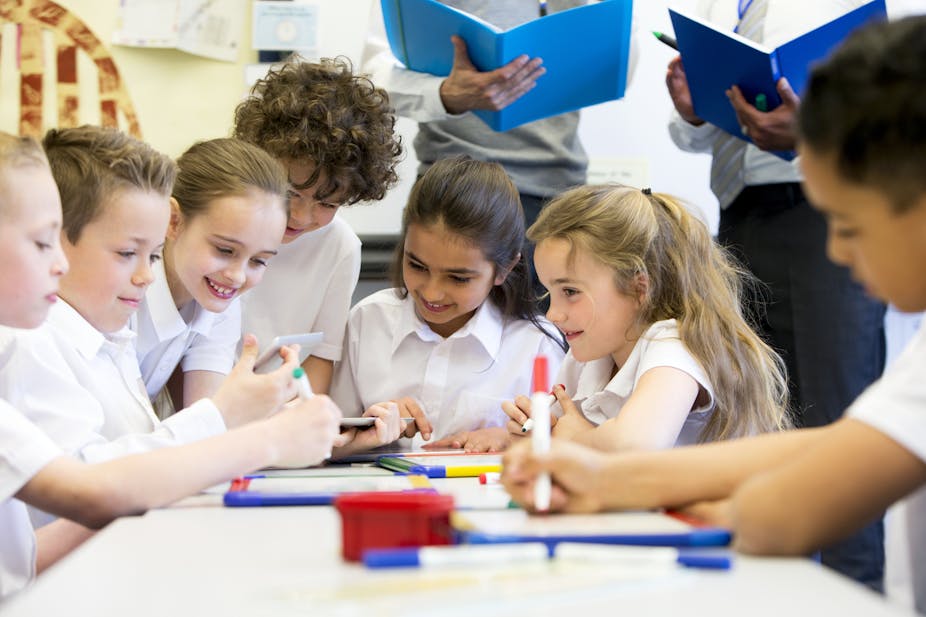Parents often face conflicting advice when deciding whether to send their child to a single-sex or coeducational school.
Despite the lack of evidence, there remains a strong and widely held belief that single-sex schooling is better for girls and coeducation is better for boys.
There are more single-sex schools for girls than for boys in each of the three Australian educational sectors: government, Catholic and independent.
As a consequence, more boys than girls are enrolled in some coeducational schools.
So as a parent, how do you decide which school is best for your child? And, importantly, what do you actually want out of a school? For example, is the focus on achieving good grades, or about making sure your child fits in and feels accepted?
There is no straightforward answer, but research has revealed there are some key things to consider when choosing a school which might help determine where to send your child.
Single-sex or co-ed school?
The single-sex versus coeducation debate in Australia has a long history. Public perceptions can be skewed by the media which, in presenting a view, have a tendency to cherry-pick research findings, or simplify issues by ignoring the complexities.
To date, here’s what we know:
Government schools are predominantly coeducational. Around 65% of Australian students attend these schools, which also tend to have higher percentages of disadvantaged students than in non-government schools.
While data show that non-government schools tend to have higher academic success than government schools, a determining factor for this relates to the socio-economic (SES) status of students. NAPLAN data reveal that higher SES correlates directly with higher NAPLAN scores.
Single-sex schools
Most of Australia’s single-sex schools are found in the fee-paying non-government sector. This means that financially secure parents have a wider choice of schools open to them.
Of the small number of single-sex schools in the government sector, many are academically selective.
Research suggests that girls who attend single-sex schools are more confident about themselves as learners in subjects such as mathematics and physics than in coeducational schools. In the absence of boys, the girls also feel less constrained in engaging in classroom discussions.
For boys attending single-sex or coeducational schools, their confidence levels in physics and mathematics are found to be equally high, and they boisterously engage in classroom discourse.
However, there is no consistent evidence to show that students – either boys or girls – achieve higher grades in single-sex than in coeducational settings.
Coeducational schools
It is socialisation, readiness for the real world, that is seen as a major advantage of coeducational schooling for boys.
While boys may learn to develop healthy relationships, and value and respect girls, this is less likely to occur in single-sex boys’ schools. For many former boys’ schools that have become coeducational, this is one of the reasons put forward for the change, often together with economic viability considerations.
Girls in coeducational schools may learn similar social lessons. But they may also learn something else that advocates of single-sex schools for girls claim is not found in these schools: that what they say in class, for example, is not always respected, and that teachers may hold different expectations of girls and boys, particularly in subject areas that are considered more suitable for males, including mathematics, physics and IT. But this need not be the case.
Academic success is driven by good teachers
What research does show is that teachers are the most influential factor that can make the difference in students’ learning outcomes.
Research by education professor John Hattie in 2003 showed that many interrelated factors affect students’ learning outcomes, including: the students themselves, their home backgrounds, schools, principals, the peer group and teachers.
“It is what teachers know, do and care about which is very powerful in this learning equation.”
Schools that provide support for novice teachers, encourage teachers to be risk-takers in the classroom, and actively support professional development and higher-degree studies are likely to develop a strong, loyal, collaborative, dedicated and hard-working staff, and students are the beneficiaries.
What should parents do?
There’s no denying that selecting a school is a difficult decision for parents to make.
Schools run in a highly competitive market for enrolments, and advertising is often targeted at the emotional concerns parents have for their offspring.
But parents know their children better than anyone else. When deciding on the best school, there are many factors to consider including, for example, location, student population diversity, curriculum and co-curricular offerings, music and sporting facilities, library and IT access, discipline policy, academic reputation etc.
A single-sex or coeducational learning setting should not be the only consideration.
The Good Schools Guide and the My School websites provide information on when schools hold open days. One of the best things parents can do is have a good look around schools and ask probing questions about the issues and concerns of importance to them and their child.

